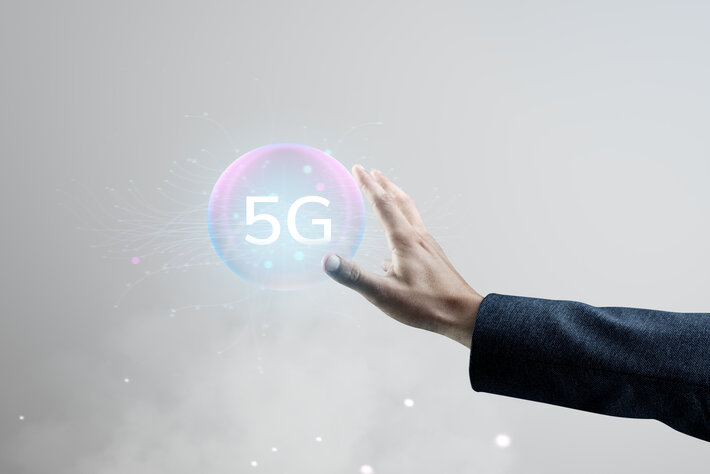Gaming is set to be really important for 5G. Everyone from operators and vendors to analysts and market forecasters agree on that point. But until now, we haven’t really heard gamers’ thoughts on the topic, or, more importantly, what they expect or want from 5G. Rather it was always assumed that they are actually aware of the capabilities of the technology, says Patrick Joggerst, CMO and EVP, business development at Ribbon.
Ribbon commissioned research with some 5,000 dedicated hardcore gamers across five countries. By hardcore we are talking about people who typically spend more than three hours gaming every single day. Across the group the average amount of time spent gaming each day was 3 hours and 40 minutes, with just over 20% of the group admitting to gaming time of more than five hours a day. And all of that was in ‘normal’ circumstances.
Gaming increases dramatically in lockdown
During periods of local lockdowns and social distancing measures, the time spent gaming increased dramatically. The number playing more than five hours a day almost doubled to 43%, and the average gaming time went past four hours with more than three-quarters of the gamers spending at least that amount of time playing games every day.
There is no doubt that these are the very people that operators need to reach with 5G gaming services. The good news we uncovered for the operator community is that these gamers are very 5G aware. Even better news is that they are deeply committed to their gaming habit, including financially, and are willing to spend even more to improve their gaming experience. The less good news is that the vast majority of today’s 5G networks are not set up to deliver the services that gamers are looking for from 5G.
Low latency needed
Nearly all the 5G networks deployed around the world have been of the ‘non-stand-alone’ variety, where the 5G radio path uses existing supporting infrastructure and is not capable of delivering the network slicing capability that has long been touted as one of the key differentiators of a 5G network.

The gaming experience and in particular the cloud gaming experience depends on a low latency connection. For 5G networks that demands network slicing with guaranteed levels of service within each slice. In turn, what that means is that unless 5G networks become ‘stand-alone’ and have a packet optical transport infrastructure capable of handling the network slicing and supporting end-to-end low-latency connections then the hardcore mobile and cloud gaming market will remain out of reach.
And the evidence of our survey is that the hardcore gamer is well worth the operators reaching. These gamers spend, on average, around $84 (€68.88) per month on their broadband and mobile connectivity combined. And what should really grab the operators’ attention, is that four out five of them would seriously consider swapping their existing broadband and mobile contracts for a 5G mobile service if it could offer a better connection and lower latency.
Furthermore, 95% of that group were prepared to pay significantly more every month for that improved experience. In fact, some 60% said they would spend at least half as much again that’s more than $120 (€98.40) per month for 5G to replace their existing home broadband and mobile contracts.
Expectations are high for 5G
But these hardcore gamers know what they want from 5G and are incredibly well informed about the service they receive. They know their exact ping rates, and they also know that if latency on a connection exceeds 30 milliseconds, the gaming experience suffers. Diving deeper, across the 5,000 global gamers, only 7% believed their current connection consistently delivered the optimal low latency rate of ten milliseconds required to enjoyably play cloud gaming. However, a sizeable 83% believed that a 5G connection would make cloud gaming a much more compelling experience.
They are not wrong true, stand-alone 5G networks are capable of exponentially outperforming the gamer’s current mobile and fixed connectivity experience, providing faster download speeds and latency as low as one millisecond. The hardcore gamers are well aware of this potential performance boost and some 58% of them said they would switch as soon as they could to a 5G service provider offering a high-quality bundled gaming subscription.
Bundling a gaming subscription with a 5G contract adds further potential revenue fuel for the operators. After all, if you examine their spend on games, subscriptions, connectivity, and accessories combined, our hardcore gamers were investing an astonishing total of $260 (€213.20) each month.
The global gaming market is massive, with some 2.7 billion ardent gamers in the world, and we estimate the revenue opportunity from 5G gaming connectivity alone is worth an extra $150 billion (€123 billion) a year for the service provider community. That’s before you add the opportunity for service providers to bundle a cloud games subscription, or develop partnerships with gaming companies, into the service packages. Then the rewards get even bigger.
5G gaming demands new investment strategy
All of which means that after speaking to the actual users our view is that everyone was right, gaming is a vitally important 5G market. But to reach it requires a step change in the investment strategy. Non-stand-alone 5G does not unlock that market. To reach that latent, and currently unfulfilled demand for mobile and cloud gaming, service providers need to invest in network slicing, in a packet optical transport infrastructure to support it, and in full stand-alone 5G networks.
The author is Patrick Joggerst, CMO and EVP, business development, Ribbon.
Comment on this article below or via Twitter: @VanillaPlus OR @jcvplus






